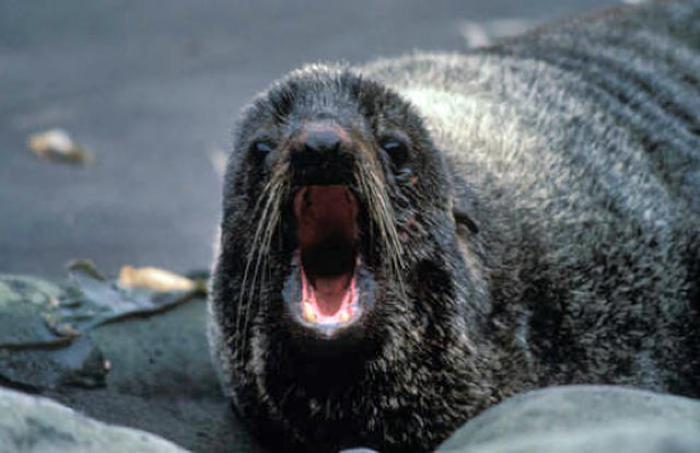Fur Seal — Aatak, Isuwiq

Each November, northern fur seals (Callorhinus ursinus) leave their summer home in the Pribilof Islands, swimming south to winter in the warmer waters off California. Until they return the following summer, these animals rarely touch land. Most fur seals live between ten and one hundred miles from land, near the edge of the continental shelf. In winter, however, some fur seals stray closer to shore and can occasionally be found in protected coastal waters. Large, older males, weighing up to six hundred pounds, often winter in the Gulf of Alaska.
Archaeological data illustrate that Alutiiqs harvested fur seals in small numbers. The remains of fur seals are scarce in village sites. Animals that ventured close to shore were probably hunted in February and March because most fur seals have moved past Kodiak by April. In the historic era, however, fur seals seem to have been more common. Their remains occur more regularly in garbage deposits from this era, and Russian observers describe seeing them. The cargo manifests of trading vessels even list a small number of fur seal hides. The term fur seal comes from the animal’s plush under-fur, which has more than 350,000 hairs per square inch.
